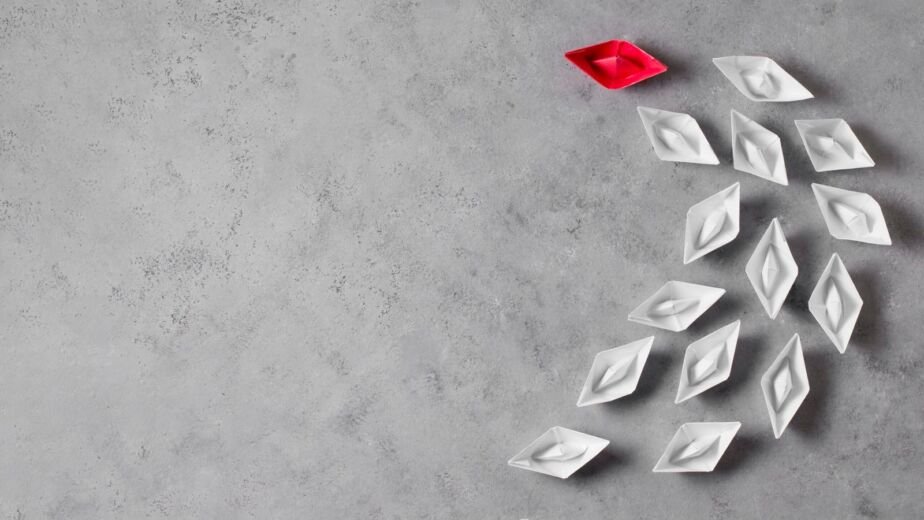Have you ever wondered why Facebook is blue, Coca-Cola is red, or why luxury brands often stick to black? It's not random—there's a science behind these choices. Color is one of the most powerful tools in a marketer's arsenal, capable of influencing consumer behavior before a single word is read.
At JSA Marketing, we've seen firsthand how the right color palette can transform a brand from forgettable to unforgettable. In this guide, we'll dive into the fascinating world of color psychology and reveal how you can leverage it to build a brand that resonates deeply with your target audience.
What Is Color Psychology in Branding?
Color psychology is the study of how different colors affect human emotions, perceptions, and behaviors. In branding, it's about understanding how these psychological responses can influence consumer interactions with your business.
The impact is significant: research shows that up to 90% of an initial impression about a product comes from color alone. Even more impressive, strategic color use can increase brand recognition by up to 80%. With numbers like these, color choice becomes far more than a mere aesthetic decision—it's a core business strategy.
The Emotional Language of Colors
Each color speaks its own emotional language. Let's decode what the primary colors in the branding spectrum are really saying to your customers:
Red: Energy, Passion, and Urgency
Red increases heart rate and creates a sense of urgency, which is why it's often used for clearance sales. It's also associated with passion, excitement, and energy.
Brand Example: Coca-Cola has owned the color red for decades, creating an association with happiness, energy, and celebration. Their consistent use of their signature red has made it instantly recognizable worldwide.
Blue: Trust, Security, and Dependability
Blue is the color of trust and security, which explains why it's so popular among financial institutions, healthcare providers, and tech companies.
Brand Example: IBM (nicknamed "Big Blue") leverages this color to communicate reliability and trustworthiness—critical qualities for a technology corporation handling sensitive business data.
Yellow: Optimism, Clarity, and Warmth
Yellow captures attention quickly (it's the first color the human eye notices) and evokes feelings of optimism, clarity, and warmth.
Brand Example: McDonald's golden arches against a red background create a sense of cheerfulness and accessibility—perfect for a family-friendly fast-food chain.
Green: Growth, Health, and Tranquility
Green symbolizes growth, renewal, and environmental consciousness. It's also associated with wealth and relaxation.
Brand Example: Whole Foods uses green extensively to emphasize its commitment to natural, organic products and sustainable practices.
Purple: Creativity, Wisdom, and Luxury
Historically associated with royalty (when purple dye was extremely rare and expensive), purple continues to convey luxury, creativity, and wisdom.
Brand Example: Cadbury has used its distinctive purple for over 100 years, creating an iconic association with indulgence and quality.
Black: Sophistication, Power, and Exclusivity
Black communicates sophistication, authority, and exclusivity, making it a favorite for luxury brands and high-end products.
Brand Example: Chanel's iconic black and white palette projects timeless elegance and sophistication.
White: Simplicity, Purity, and Minimalism
White represents simplicity, cleanliness, and purity, often used to communicate a minimalist or clinical approach.
Brand Example: Apple has built its visual identity around white space and minimalism, emphasizing the sleek, user-friendly nature of its products.
Color Psychology in Action: The Decision-Making Impact
Colors don't just influence how we feel about brands—they actively impact purchasing decisions. Consider these insights:
- 85% of consumers cite color as the primary reason they buy a particular product
- Color can improve reading comprehension by 40%, learning by 55-68%, and comprehension by 73%
- Changing the call-to-action button color on websites can increase conversion rates by up to 34%
These statistics reveal why strategic color selection is crucial for effective branding and marketing campaigns.

How to Choose the Right Colors for Your Brand
Selecting colors for your brand isn't just about personal preference—it's about strategic alignment with your brand identity and customer psychology. Here's our approach at JSA Marketing:
1. Define Your Brand Personality First
Before picking colors, clearly articulate your brand's personality traits. Are you:
- Sophisticated and luxury-oriented?
- Youthful and energetic?
- Trustworthy and secure?
- Eco-conscious and natural?
Each personality type naturally aligns with different color palettes.
2. Research Your Industry and Competitors
Understanding color norms in your industry provides two valuable paths:
- Follow convention: Leverage established color associations (blue for finance, green for sustainability)
- Disrupt expectations: Deliberately break industry norms to stand out (like T-Mobile's magenta in the telecommunications industry)
3. Consider Your Target Audience
Different demographics respond differently to colors:
- Gender considerations: While preferences vary widely by individual, studies show men tend to prefer bold colors while women often respond to softer tones
- Age factors: Younger audiences may respond better to bright, saturated colors, while older demographics might prefer more subdued palettes
- Cultural implications: Colors carry different meanings across cultures (white symbolizes purity in Western cultures but can represent mourning in some Eastern cultures)
4. Test Before Committing
Before fully committing to a color scheme:
- Conduct A/B testing with different color variations
- Gather feedback from your target audience
- Check how colors appear across different devices and in print
The Color Differentiation Strategy
Sometimes, the most powerful color choice is the one that sets you apart. When Lyft entered the rideshare market dominated by Uber's black and gray palette, they chose bright pink to differentiate themselves completely. This created instant brand recognition and signaled a more friendly, approachable alternative.
Similarly, T-Mobile's magenta stands out dramatically in the telecommunications industry where blue dominates (AT&T, Verizon). This distinctive choice has become their brand signature, helping them claim visual territory that is exclusively theirs.
Common Color Mistakes to Avoid
Even the most thoughtful color strategy can fall flat if you make these common mistakes:
1. Using Too Many Colors
Color overload creates visual confusion and weakens brand recognition. Stick to a primary color and 1-2 complementary colors for most applications.
2. Ignoring Accessibility
About 8% of men and 0.5% of women have some form of color blindness. Ensure your color choices maintain accessibility by:
- Avoiding problematic color combinations (red/green is particularly challenging)
- Maintaining sufficient contrast between text and background
- Not relying on color alone to convey important information
3. Inconsistent Application
Inconsistent use of color across platforms dilutes brand recognition. Create clear color guidelines specifying exact color values (HEX, RGB, CMYK, Pantone) for all applications.
4. Chasing Trends Over Strategy
Color trends come and go, but your brand identity needs longevity. While staying current is important, don't sacrifice long-term brand recognition for short-term trendiness.

Creating Your Color Strategy: A JSA Marketing Approach
At JSA Marketing, we help clients develop comprehensive color strategies using this proven process:
- Discovery: We analyze your brand values, personality, and competitive landscape
- Research: We identify color associations that align with your marketing goals
- Palette Development: We create primary, secondary, and accent color recommendations
- Testing: We validate color effectiveness across applications
- Implementation: We develop brand guidelines for consistent application
The result is a strategically sound color system that enhances recognition, communicates your brand values, and creates emotional connections with your audience.
The ROI of Strategic Color Use
Investing in a thoughtful color strategy delivers measurable business benefits:
- Increased brand recognition: Consistent color use across touchpoints builds familiarity
- Higher conversion rates: Strategically colored CTAs improve response rates
- Enhanced perceived value: Appropriate color choices can position products as premium
- Improved customer loyalty: Colors that resonate emotionally foster stronger connections
Conclusion: Color as a Strategic Asset
Color is far more than decoration—it's a powerful psychological tool that influences how people perceive and interact with your brand. By understanding the emotional associations of different colors and strategically applying this knowledge, you can create a brand identity that resonates deeply with your target audience.
The most successful brands don't choose colors arbitrarily. They recognize that every hue communicates specific messages and triggers particular emotions. By treating color as a critical business decision rather than just a design preference, you position your brand for stronger recognition, deeper customer connections, and ultimately, greater success.
Ready to harness the power of color psychology in your branding? At JSA Marketing Company LLC, we specialize in developing strategic, psychology-based brand identities that drive real business results. Visit our website to learn more about our branding services or contact us today for a color strategy consultation.

